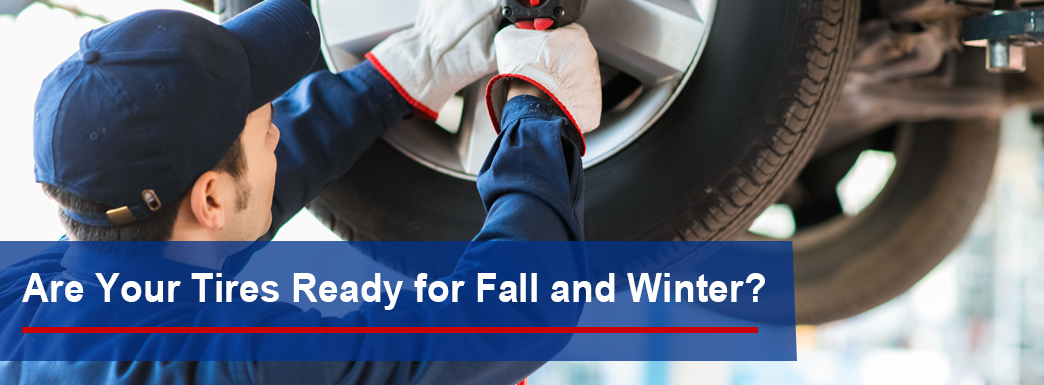If your enjoying the cooler temperatures and beautiful foliage that fall brings, don’t forget winter’s cold and snow are right behind! Along with football and the holidays come rain, falling leaves, snow, and ice - all of which cause dangerous driving conditions. Do not wait till the snow is on the ground to prepare your car - act now.
One of the best ways to combat these weather risks is by making sure your tires are prepared. At the end of the day, they are all that keeps your car on the road.
Here are a few tips to get your tires ready to handle any weather condition you may face in the coming months:
Monitor Tire Pressure
Tires lose 1 to 2 lbs. of air pressure for every 10 degree drop in temperature.
A loss of tire pressure can sacrifice traction and handling, which are needed when dealing with poor weather. Regularly check tire pressure to ensure stays within the recommended range of your vehicle’s owner’s manual or door tire pressure decal.
Check Tire Tread
Tire tread is vitally important in helping tires maintain proper traction with the road. Hydroplaning during heavy rains and traction in snow is made much worse by tires that have very little tread left. It’s easy to check. All you need is a quarter; insert the coin into the tread groove and if you can see the top of Washington’s head your tires are worn out and should be replaced. Additionally, many tires have a tread wear indicator molded into the tire tread that becomes flush with the tire surface when the tire is worn out. These indicators are at 2/32” above the tread, however when a tire is at 4/32”, there is a significant loss of traction, particularly on wet or snowy roads, and you should consider replacing them before they get to the tread bars. Since you only have about 6” of tread on each wheel contacting the road at any time, being overly cautious with tires is very wise.
Consider Tire Options
Depending on where you live, you should consider different tires to suit your area’s weather conditions.
In mountainous area or where it gets colder with ice, consider getting winter tires with better traction ratings and tread patterns that work better in ice, snow, or slush.
If you are in an area that sees rain as well as some snow, consider tires with deeper tread ratings. Deep tire treads help move water out from under the tires to mitigate the chance of hydroplaning in wet conditions.
Alternatively, you should consider all-season tires. These will save you time, money, and space, by avoiding the need to change tires between seasons and trying to find somewhere to store out-of-season winter tires.
Have The Tires Looked At By A Reputable Garage
Have your tires checked over by a qualified garage before winter to verify pressures and tread depth. If you do need tires, have the garage give you recommendations based on your needs. The AAA Approved Auto Repair program has many qualified garages that can perform these checks. A list of these garages is at the AAA.com/AAR. You can also sign up for a AAA membership for coverage while you drive.


